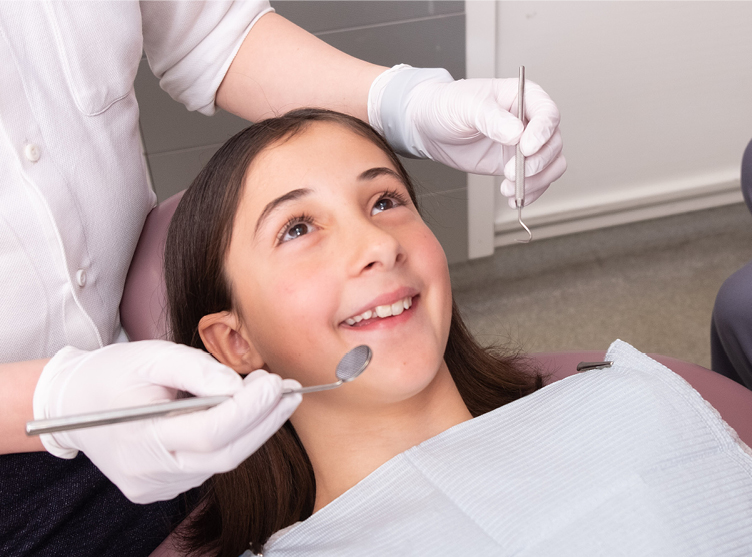4 Easy Facts About Legacy Orthodontics Shown
The Basic Principles Of Legacy Orthodontics
Table of ContentsGetting The Legacy Orthodontics To WorkThe Greatest Guide To Legacy Orthodontics10 Easy Facts About Legacy Orthodontics ExplainedThe 5-Second Trick For Legacy OrthodonticsNot known Details About Legacy Orthodontics
In enhancement, we provide flexible treatment timetables, versatile settlement alternatives and a fun, enjoyable experience.An orthodontist is a dentist trained to detect, stop, and deal with teeth and jaw abnormalities. They remedy existing problems and are educated to identify issues that might establish in the future. Orthodontists deal with individuals of any ages, from youngsters to grownups. People frequently connect a best smile with excellent wellness.
Malocclusion, or misaligned teeth, can result in dental concerns, including dental caries, periodontal disease, and hard or excruciating chewing. Yet not everyone is birthed with straight teeth. If you have a negative bite or big rooms between your teeth, you may intend to consult a dental expert specializing in orthodontic care.
An Unbiased View of Legacy Orthodontics
( Image Debt: DigitalVision/Getty Images) Orthodontists utilize taken care of and detachable dental gadgets, like dental braces, retainers, and bands, to alter the placement of teeth in your mouth. Orthodontic treatment is for dental abnormalities, consisting of: Jagged teethBite problems, like an overbite or an underbiteCrowded teeth or teeth that are as well much apartJaw misalignmentThe objective of orthodontic therapy is to improve your bite.
A healthy and balanced bite ensures you can eat, eat, and speak properly. While you may think about orthodontists as mostly for kids or teenagers who need braces, they can deal with oral issues at any type of age. Orthodontists attend college, oral institution, and orthodontic institution. After graduation, they invest 2 or 3 years in an orthodontic residency program.
, however not all dental practitioners are orthodontists. They concentrate on 2 areas: Just how to properly and securely relocate teeth How to appropriately lead development in the teeth, jaw, and faceOnce an orthodontist has actually finished training, they have the choice to end up being board accredited.
See This Report about Legacy Orthodontics
Malocclusion leads to tooth overcrowding, an askew jaw, or irregular bite patterns. Malocclusion is usually treated with: Your orthodontist connects steel, ceramic, or plastic square bonds to your teeth.
If you have just small malocclusion, you may have the ability to use clear dental braces, called aligners, as opposed to typical braces (https://slides.com/legacyortho). Some individuals require a headgear to help move teeth right into line with stress from outside the mouth. After dental braces or aligners, you'll require to wear a retainer. A retainer is a custom-made tool that keeps your teeth in area.
They're most usually used on children. They can create added room in the mouth without needing to draw teeth. If you have a significant underbite or overbite, you could require orthognathic surgery (also called orthodontic surgical procedure) to extend or reduce your jaw. Orthodontists utilize cables, surgical screws, or plates to support your jaw bone.
You may need to see an advice orthodontist if you have: Crowding or not enough area for every one of your teethOverbite, when your top teeth come over your base teethUnderbite, when your base teeth are as well much forwardSpacing or concerns with gapsCrossbite, which is when your top teeth fit behind your bottom teeth when your mouth is closedOpen bite or a vertical gap between your front bottom and top teethMisplaced midline, when the center of your bottom and top teeth do not line up Fixing a dental malocclusion can: Make biting, eating, and talking easierImprove the proportion of our face and your general appearanceEase pain from temporomandibular joint conditionsSeparate your teeth and make them less complicated to clean up, assisting protect against dental cavity or tooth cavities It's often a dentist that initially notices misaligned teeth during a regular exam.
The Best Guide To Legacy Orthodontics

Throughout your first orthodontic consultation, you'll likely have: An oral examPhotos taken of your face and smileDental X-raysPanoramic (360 degree) X-rays of your face and headImpressions to develop mold and mildews of your teethThese tests will aid your orthodontist know how to wage your therapy. orthodontist. An orthodontist is a dental expert that's had training to treat your teeth and jaw
An orthodontist is concentrated on your bite, so something like a cracked tooth would certainly be managed by a dental practitioner. Orthodontists are focused on your bite, or the means your teeth fit with each other, and the straightness of your teeth.
Ever wondered how celebrities always seem to have perfectly aligned teeth? Orthodontists are dental specialists who concentrate on dealing with abnormalities in the teeth and jaws.
The Single Strategy To Use For Legacy Orthodontics

, orthodontists have a diverse toolkit at their disposal. These tried-and-true braces use a system of braces bonded to the teeth and connected by cables.
Clear aligners, like Invisalign, are a preferred alternative for clients seeking a much more very discreet therapy alternative. These detachable trays are tailor-made to considerably change the teeth's setting. Headgear may be made use of along with dental braces or aligners to use added targeted pressures, particularly for fixing jaw inconsistencies. In situations of narrow jaws, palatal expanders can be utilized to produce area for appropriate tooth alignment.